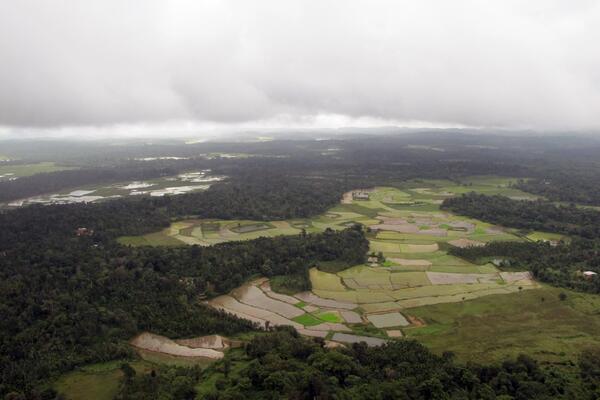Forests play an important role in trapping and storing carbon from the Earth’s atmosphere, but some models overestimate their carbon removal capacity by nearly threefold, according to a top professor of forest economics.
Runsheng Yin of Michigan State University’s Global Forest Carbon: Policy, Economics, and Finance emphasizes the importance of nature-based solutions to the climate crisis while also calling for significant changes to the calculation of carbon credits from reforestation, afforestation, and improved forest management. He discovered that the present modeling of local smallholding forestation sites is incompatible with the internationally recognized Paris Agreement.
“Companies worldwide are investing heavily in reforestation strategies, and while vital this is not going to be enough to remove the amount of carbon created in making timber, and the results won’t be quick enough to counteract the carbon output created by cutting down the trees in the first place,” Yin explains.
Companies worldwide are investing heavily in reforestation strategies, and while vital this is not going to be enough to remove the amount of carbon created in making timber, and the results won’t be quick enough to counteract the carbon output created by cutting down the trees in the first place.
Runsheng Yin
More accountability needed
The world’s leading authority in forest economics has called for more thorough accounting and assessments of local forest carbon storage and sequestration initiatives. This will entail correctly evaluating what happens to the timber after it has been logged and determining how long the carbon trapped in the subsequent wood products will remain before returning to the atmosphere. He proposes the establishment of intermediate agencies to pool the contributions of local smallholders. And he requests that the process be managed coherently at the national and international levels so that it can have the greatest impact.
Reducing the quantity of carbon dioxide in the atmosphere is crucial to combating climate change because rising amounts of greenhouse gases in the air and ocean cause temperatures to increase, sea levels to rise, and weather to become dangerously unpredictable and severe. The international Paris Agreement of 2015 saw governments vow to take steps to limit global warming to 1.5 degrees Celsius.
“Nations, corporations, and people are looking to natural solutions to offset their greenhouse gas emissions. As the practice becomes more profitable, it is critical that the accounting is done correctly,” Yin says.
“The climate crisis is heightening, with 2023 representing the warmest year on record. The 1.5 degrees warming limit as set out in the Paris Agreement is perilously close to being breached. Nature-based solutions have an important role to play in helping us stem the worst impacts of climate change — but rigorously assessed methods to reliably offset and reduce greenhouse gas emissions could not be more urgent.”

What does the research show?
Yin analyzed an intensively-managed pine plantation in the South of the United States and found that the amount of carbon offset credits a landowner can take was exaggerated by a factor of at least 2.76. Yin’s empirical research indicates that this finding could be representative of the entire forestation sector. The central problem is that previous modeling has not examined fully what happens to the timber after the trees have been logged.
Yin discovered that the time it takes for carbon to return to the environment after logging varies depending on the type of wood product produced — such as furniture, plywood, or paper. Each degrades at a different rate, but for carbon credits to be valuable, the carbon must be stored long enough to be classified as ‘permanent’.
On the other hand, Yin noted that it can be difficult to maintain forest systems intact for the sake of carbon storage, as suggested by some analysts, with reduced or even halted timber production due to the enormous holding costs and the opportunities of using wood to substitute for products based on fossil energies or non-renewable materials.
Yin highlighted that forest carbon offsetting, when properly accounted for, is significant and deserves to be substantially pushed and monetarily rewarded. However, my analysis indicates that its potential may not be as high as some analysts have suggested. That’s because prior studies have mainly failed to adhere to the Paris Agreement’s accounting criteria, properly handle timber and carbon as joint goods, and evaluate how long each of the resulting wood products will store carbon.”
“Local carbon offset schemes are important, but they must be integrated into larger jurisdictional methods headed by governments and in accordance with international climate obligations.
















